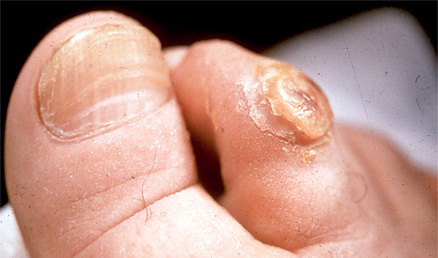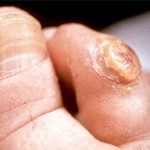A corn is a protective layer of dead skin that when formed builds up around the toes. This is caused by friction on the feet, which can be a result of wearing shoes or socks that are too tight, pressure from high heels or crooked toes.
A callus is similar to a corn in that they are a protective layer of dead skin that comes from the same material, but instead builds up around the balls or heels of your feet. Some of the causes of calluses are poorly fitting shoes, flat feet and walking on hard surfaces.
Some main difference between corns and calluses are.
- Corns are smaller than calluses
- Corns generally (not always) have a hard center
- Corns have a hard center surrounded by inflamed skin
- Corns usually occur in non-weight bearing parts of skin (not always)
- Corns can be painful when pressed
- Calluses are not generally painful
- Calluses are usually larger than corns, and vary in shape
- Calluses generally develop on the soles of the feet, especially under the heels or balls, on the palms of the hands, and also on the knees.
Some treatment options for corns and calluses
- Creams – special creams may be recommended to rehydrate areas with extra thick skin.
- Trimming or removing – the doctor pares down the thickened skin, or uses a scalper to trim a large corn. A podiatrist (foot doctor) may remove some of the hard skin that surrounds the corn so that the center of it can be removed.
- Salicylic acid – after trimming the doctor may apply a patch with 40% salicylic acid. The patient will need to replace the patch periodically. A pumice stone or metal nail file is usually used to rub away dead skin before applying a new patch.
- Foam wedges – these may be used for corns on the toes to reduce pressure. Sometimes special silicone wedges may be used.
- Antibiotics – an antibiotic ointment may be prescribed to lessen the risk of infection.
- Orthotics – these are custom-made padded shoe inserts which may help people with an underlying foot deformity.
- Bone problem surgery – the bone may need to be surgically aligned (rare).
With regular checkup from a podiatrist the corn or callus will be removed and prevented from reoccurring.


